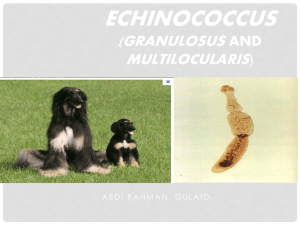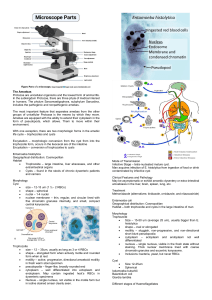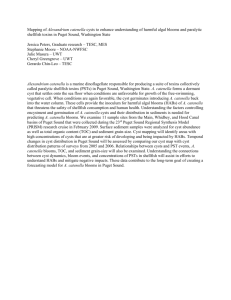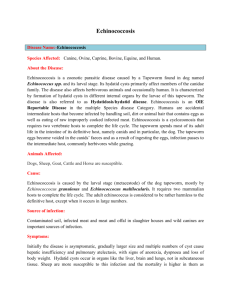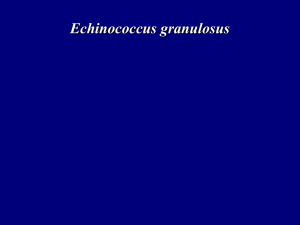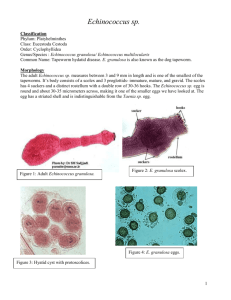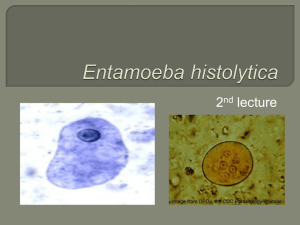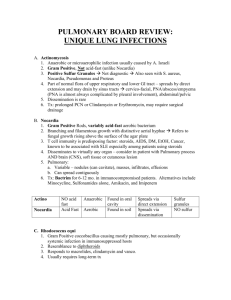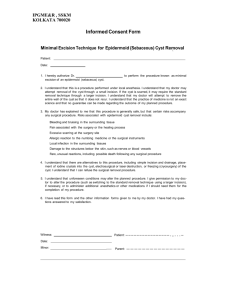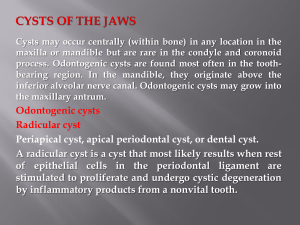HYDATID CYST DISEASE
advertisement
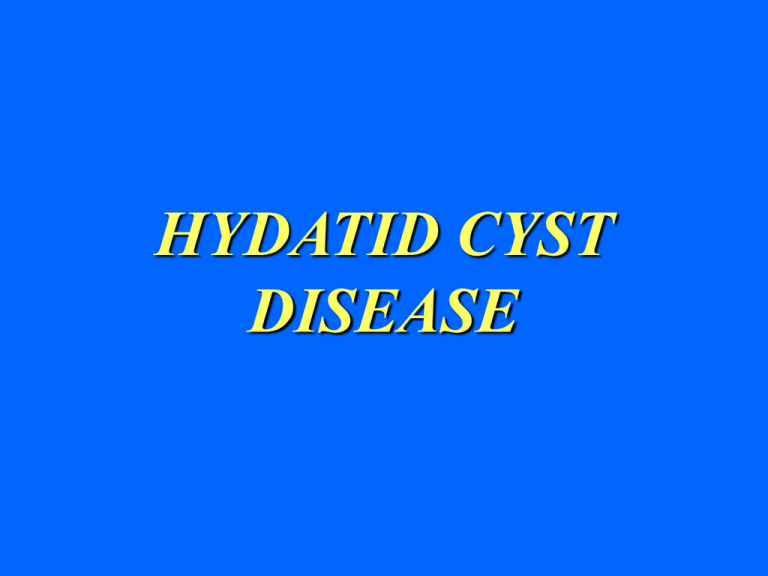
HYDATID CYST DISEASE 1 Echinococcus granulosus cystic echinococcosis 2 Echinococcus multilocularis alveolar echinococcosis Echinococcus granulosus Layers of hydatid cyst • Pericyst or adventitia • The endocyst or laminated layer • Germinal layer The germinal layer produces clear fluid which attains a pressure of up to 300 mm of water, keeping the endocyst in intimate contact with the pericyst. The endocyst receives its sustenance from the pericyst. Cyst layers and contents • The growth rate of cysts is highly variable and may depend on strain differences and cyst location. Estimates of the average increase of cyst diameter vary (approximately 1.5-2 cm/year). Clinical presentation : The clinical features of CE are highly variable. The spectrum of symptoms depends on the following: • Involved organs • Size of cysts and their sites within the affected organ or organs • Interaction between the expanding cysts and adjacent organ structures, particularly bile ducts and the vascular system of the liver • Complications caused by rupture of cysts • Bacterial infection of cysts and spread of protoscolices and larval material into bile ducts or blood vessels • Immunologic reactions such as asthma, anaphylaxis, or membranous nephropathy secondary to release of antigenic material Lab Studies: • Generally, routine laboratory tests do not show specific results. In patients with rupture of the cyst in the biliary tree, marked and transient elevation of cholestatic enzyme levels occurs, often in association with hyperamylasemia and eosinophilia (as many as 60%). • Casoni or intradermal test oIndirect hemagglutination test and enzyme-linked immunosorbent assay are the most widely used methods for detection of anti-Echinococcus antibodies (immunoglobulin G [IgG]).These tests give false positive results in cases of schistosomiasis and nematode infestations that is why they are not specific for diagnosing hydatidosis. • Immunoelectrophoresis : depends on the formation of specific arc of precipitation ( called arc 5 ) which is highly specific and can be used to exclude cross-reactions caused by noncestode parasites Imaging Studies: • • • • Plain radiography Ultrasound examination CT scaning MRI Treatment : • A- Medical: • Two benzimidazolic drugs, mebendazole and albendazole, are well tolerated but show different efficacy. Praziquantel : it belongs to isoquinoline group and has been widely used in schistosomiasis and it has been shown to be a most active and rapid scolicidal agent but it has poor effect on germinal layer so it is of choice for prophylaxis in pre and post operative period in order to prevent secondary implantation of spilled protoscoleces . B- Surgical: Surgery was the only treatment available before the introduction of anthelmintic drugs. It is considered the first choice of treatment for echinococcosis but is associated with considerable morbidity, and recurrence rates (2-25%). Minimally invasive treatment • PAIR
